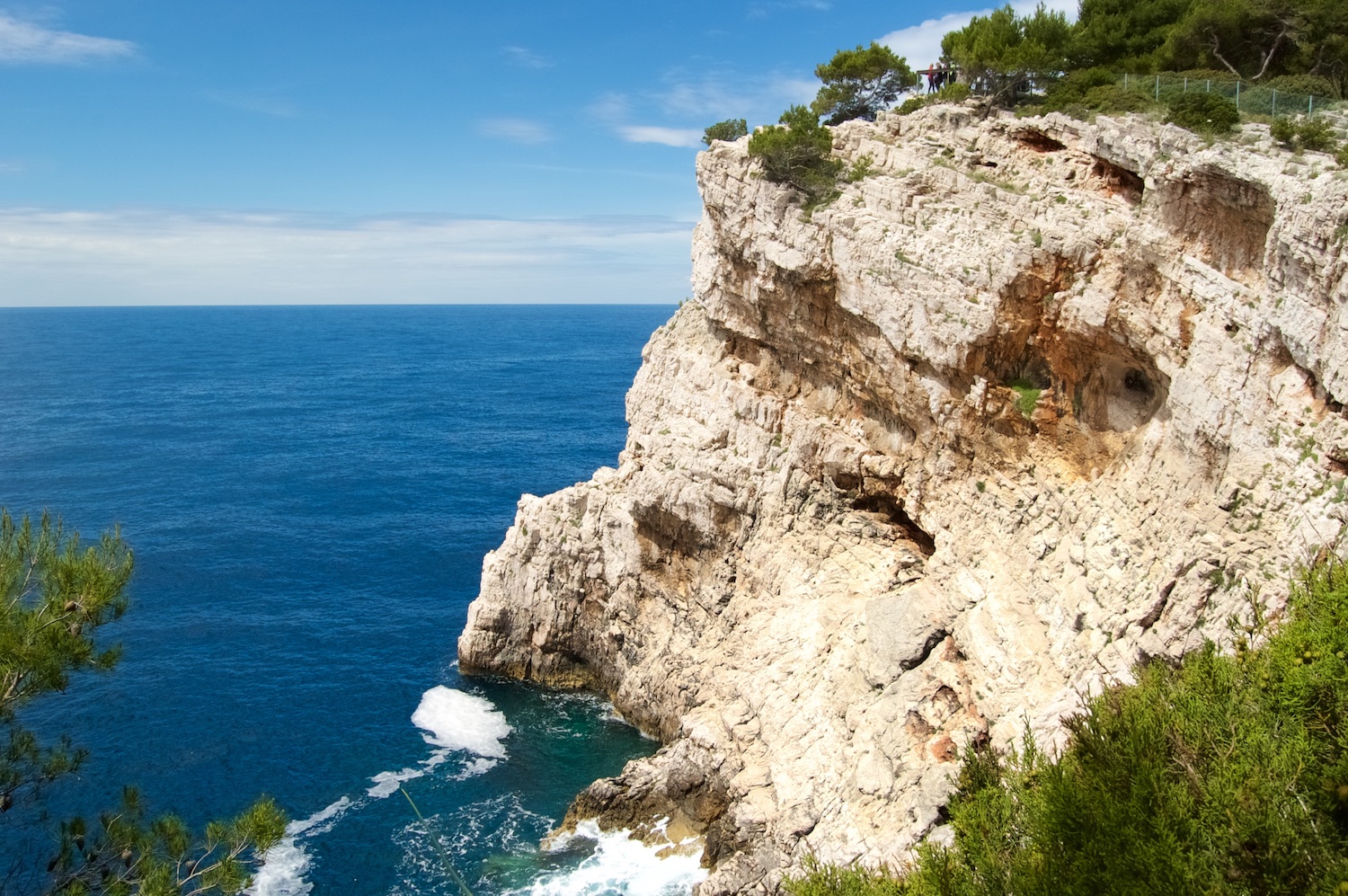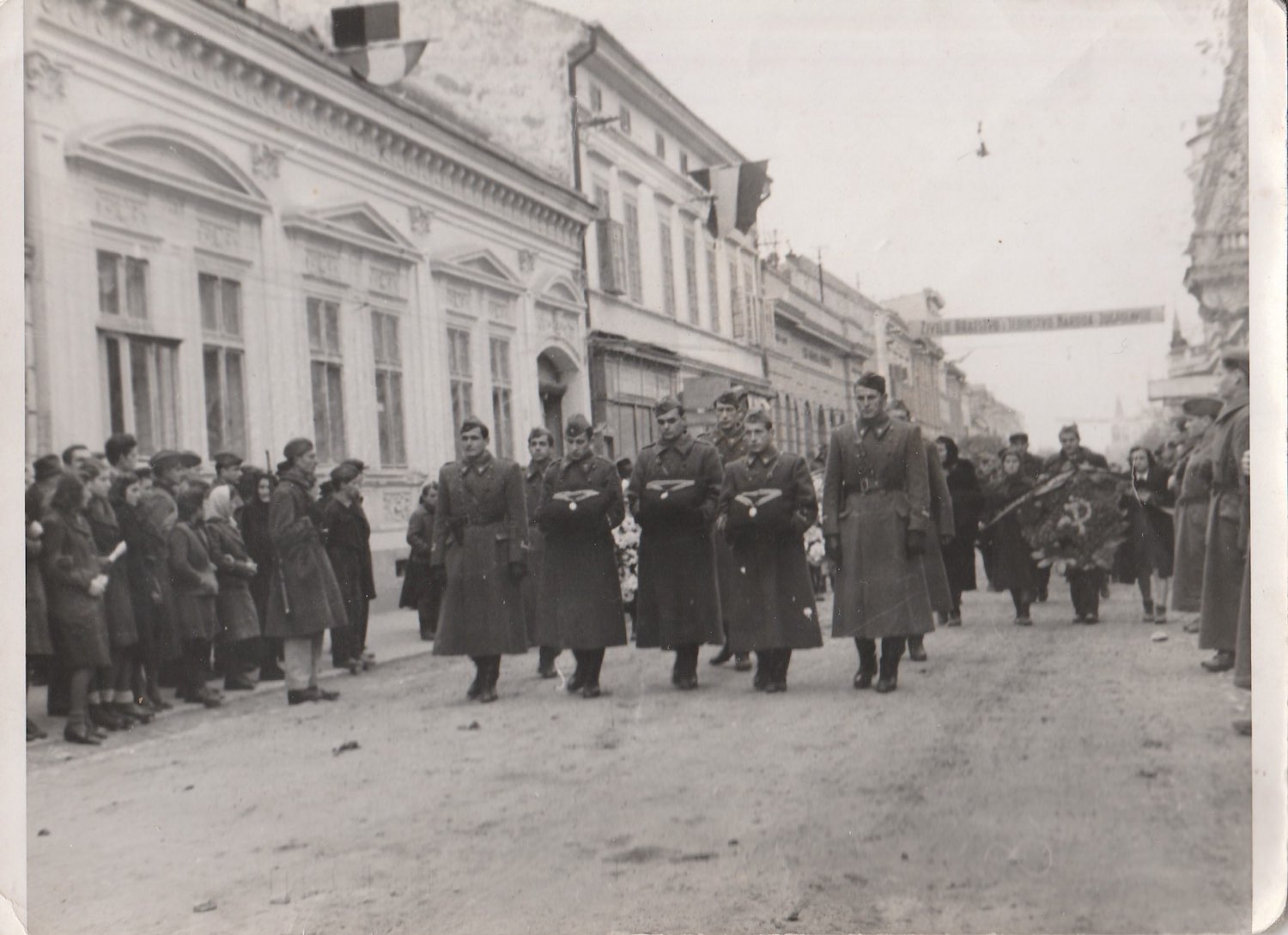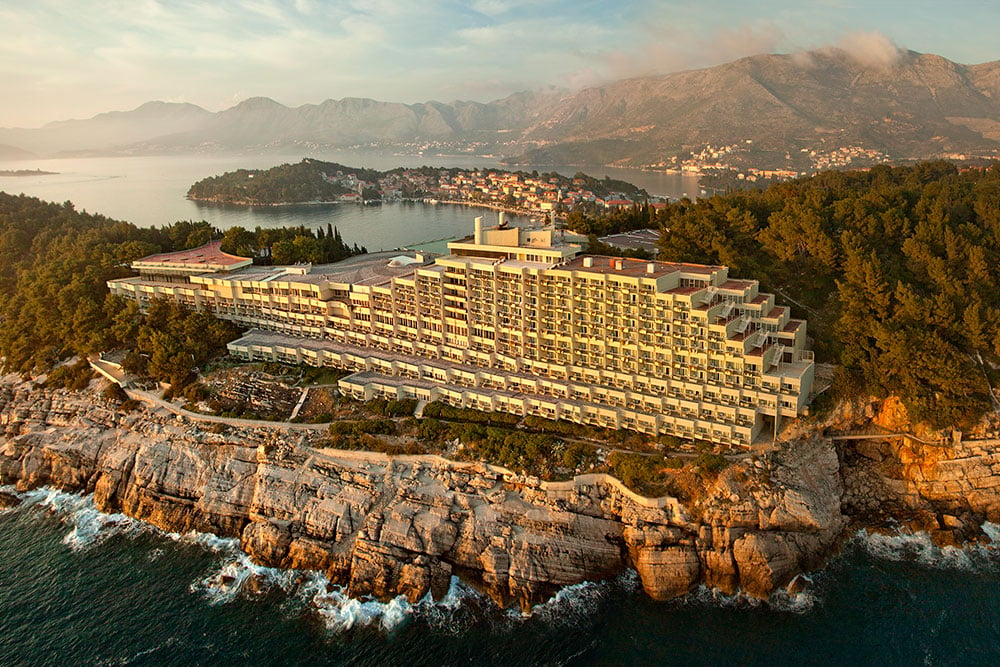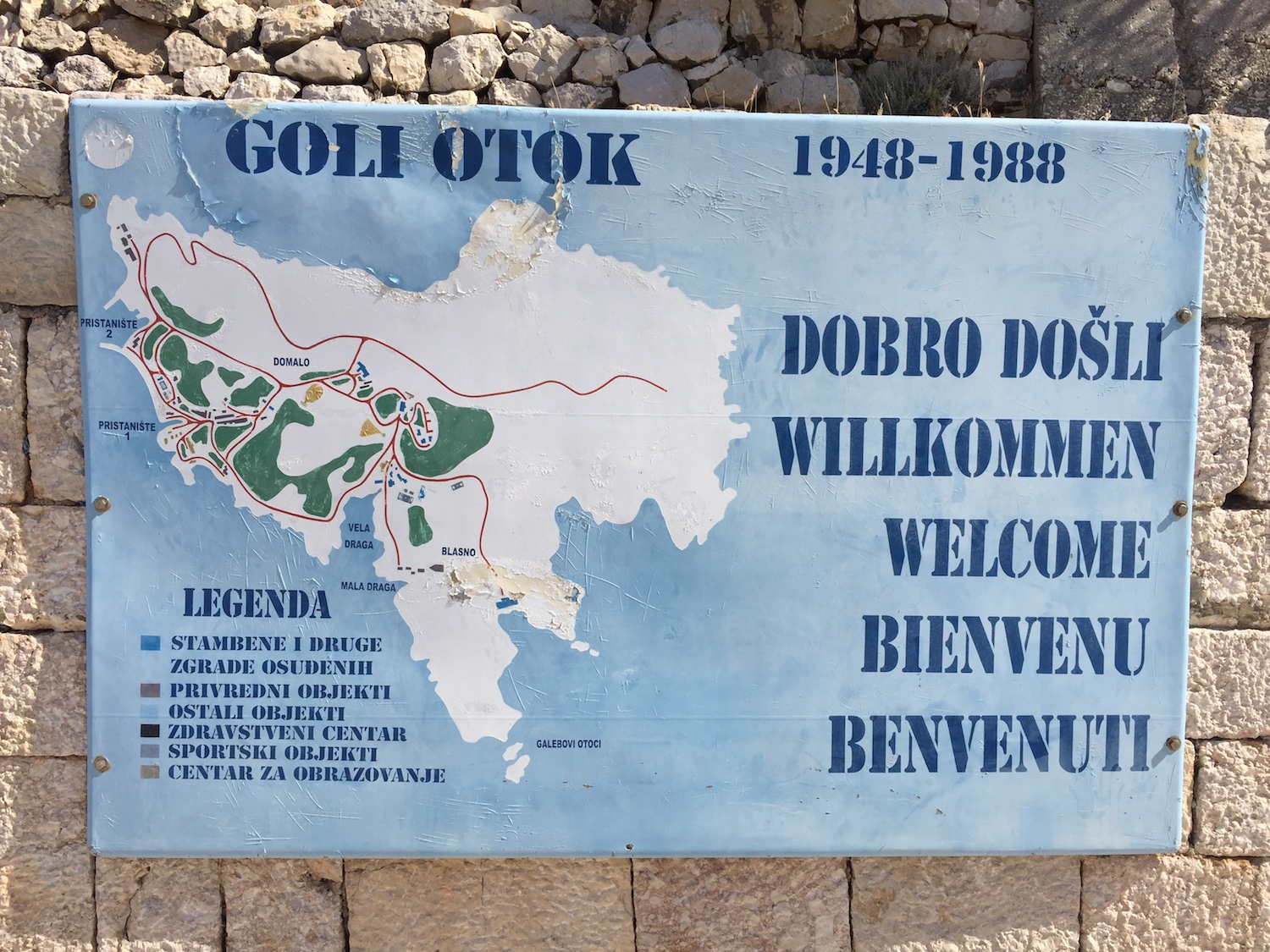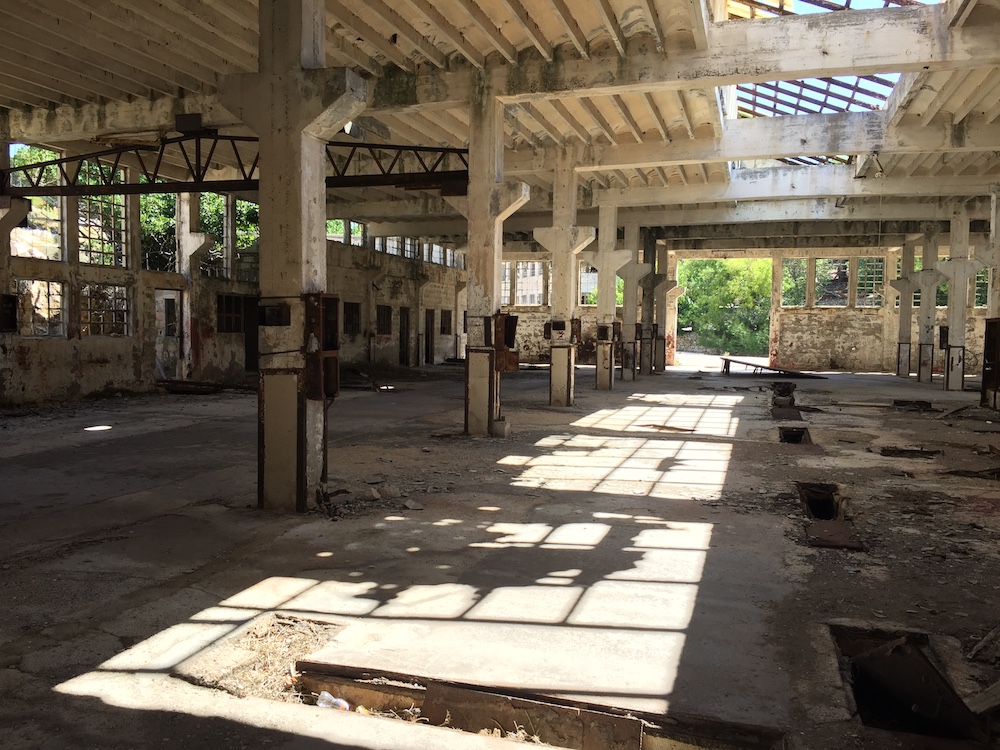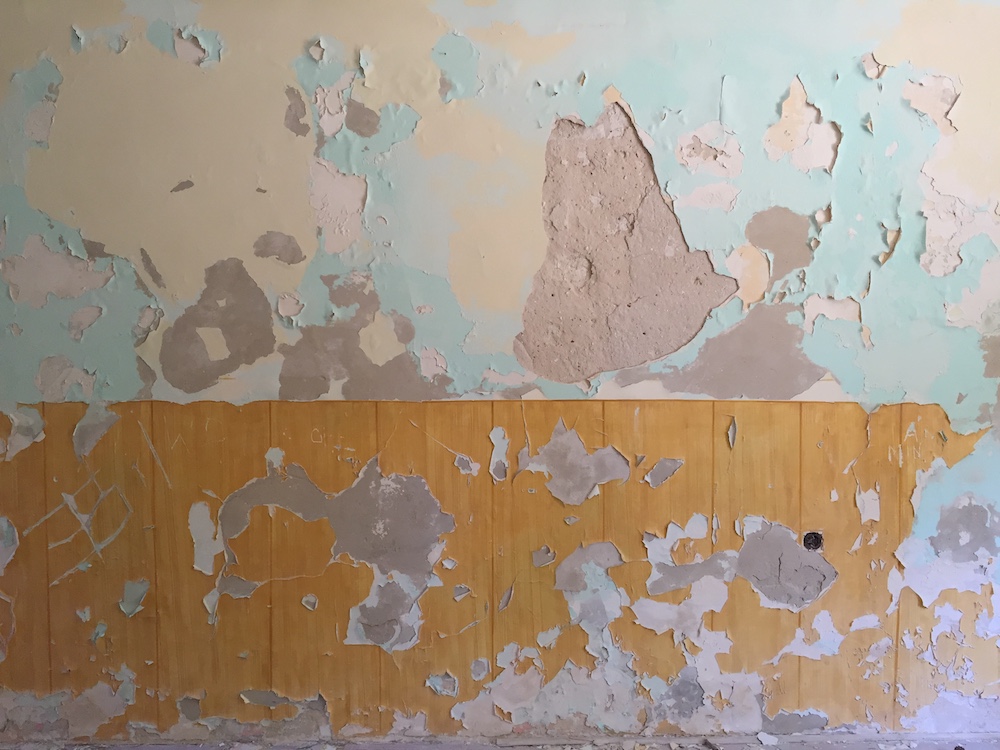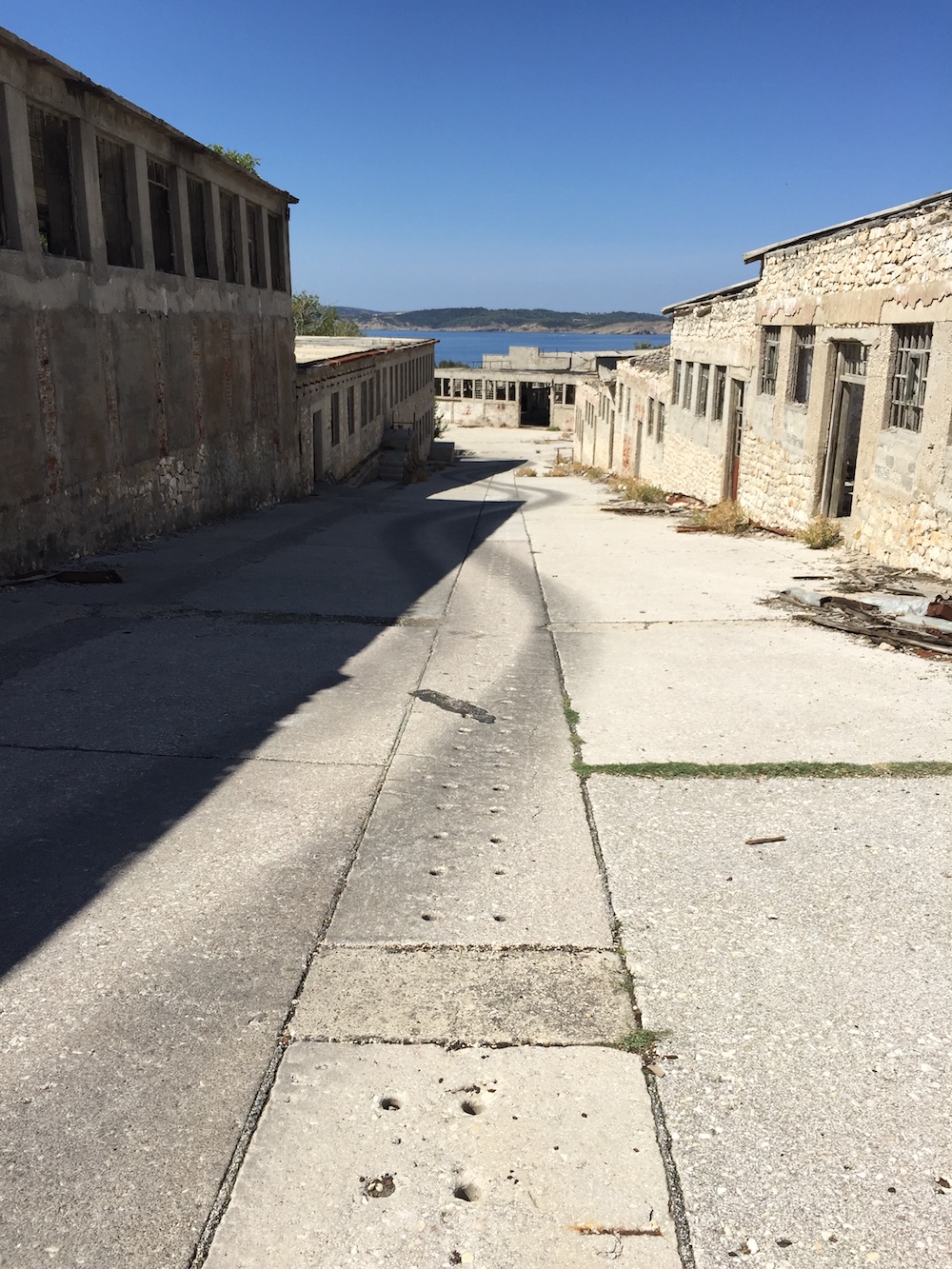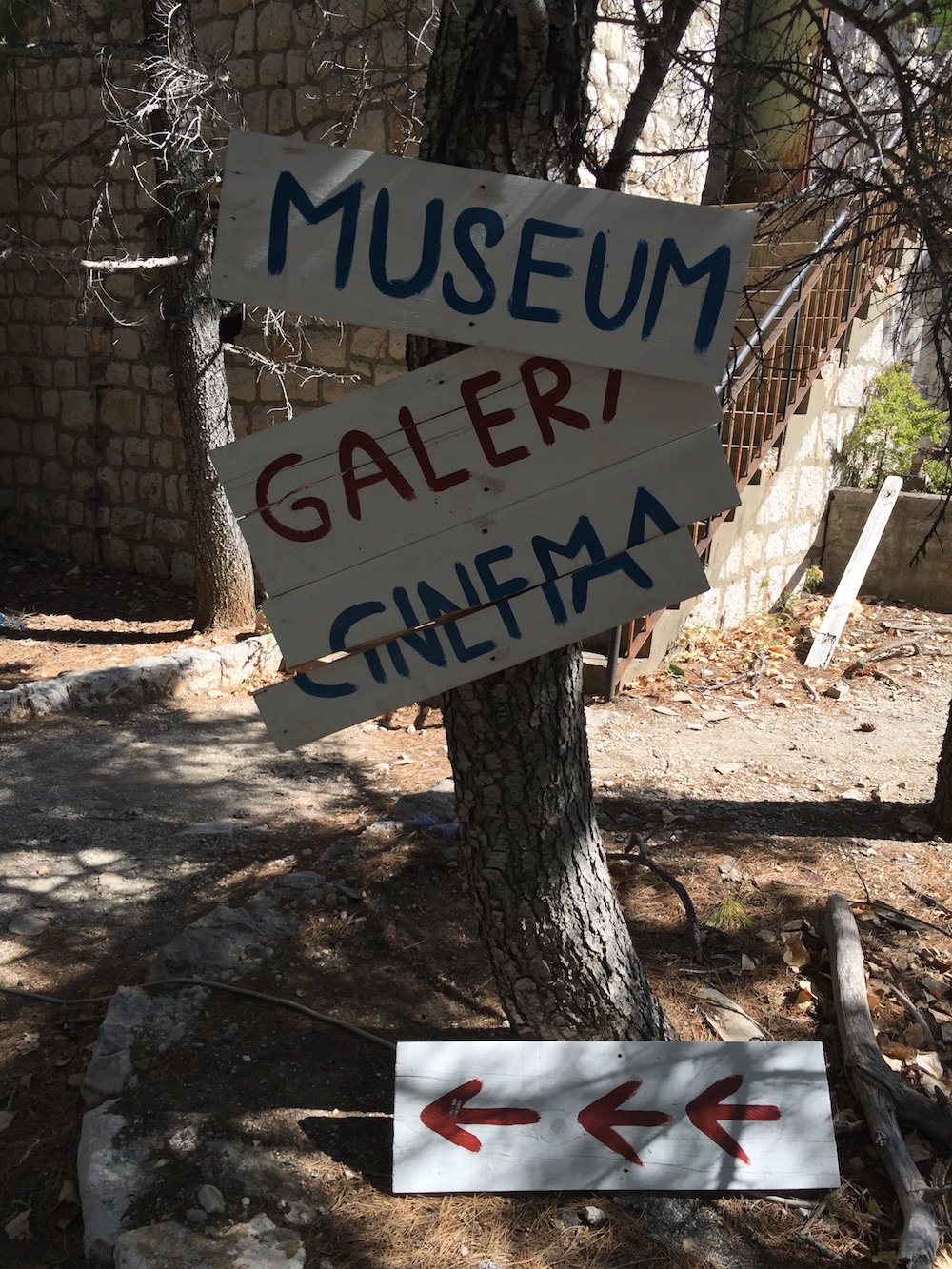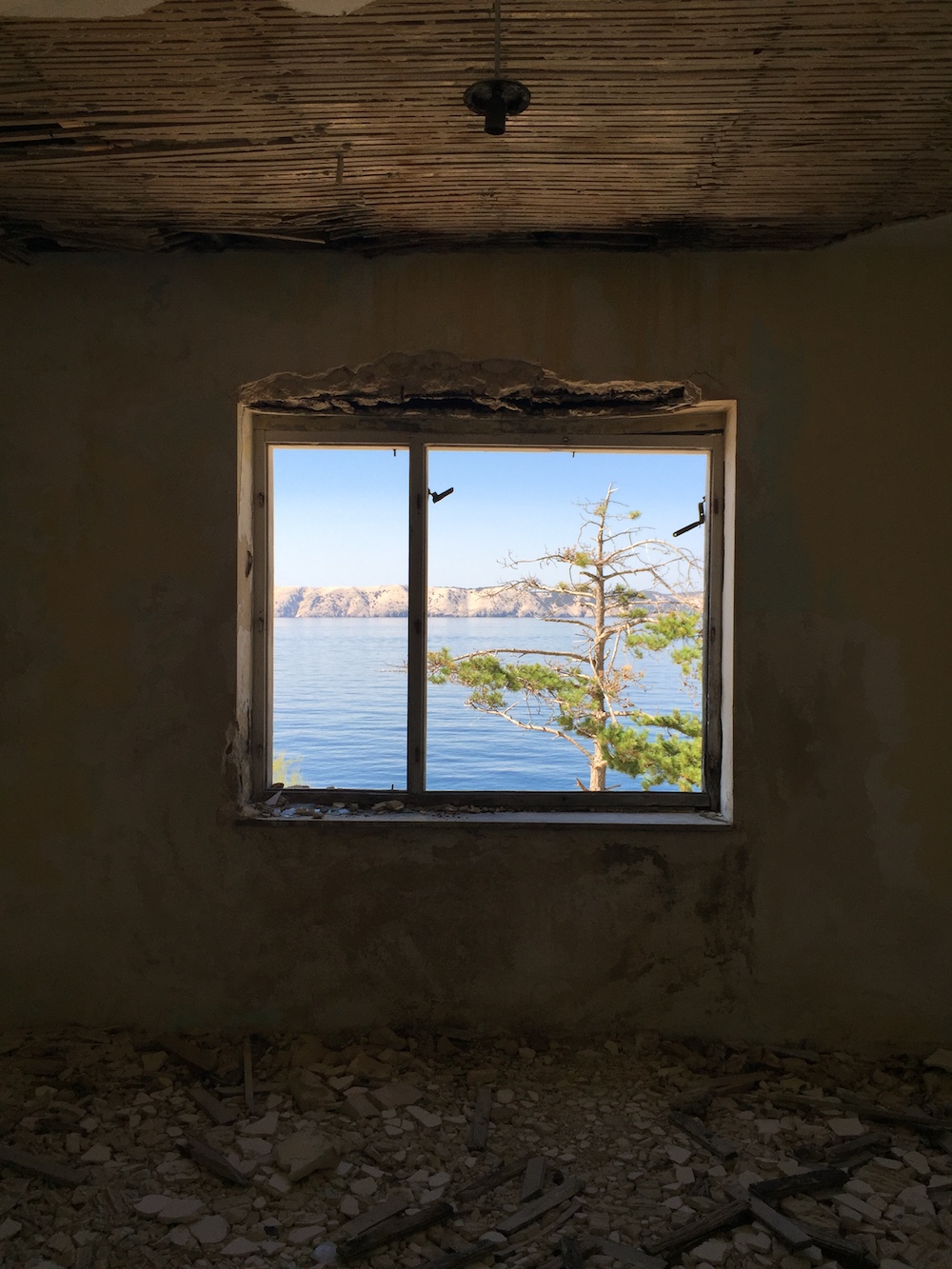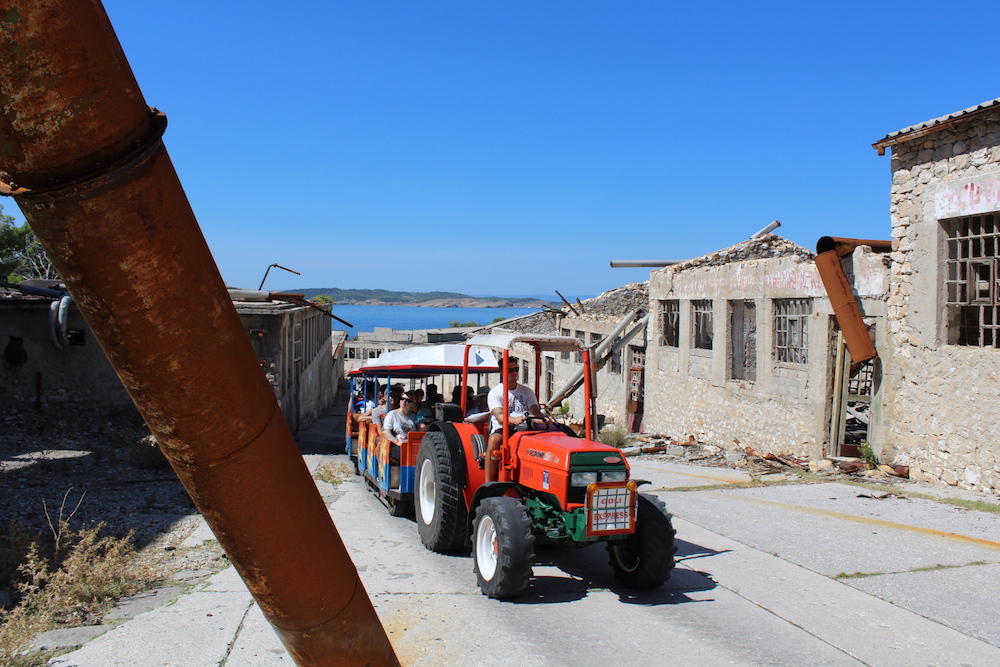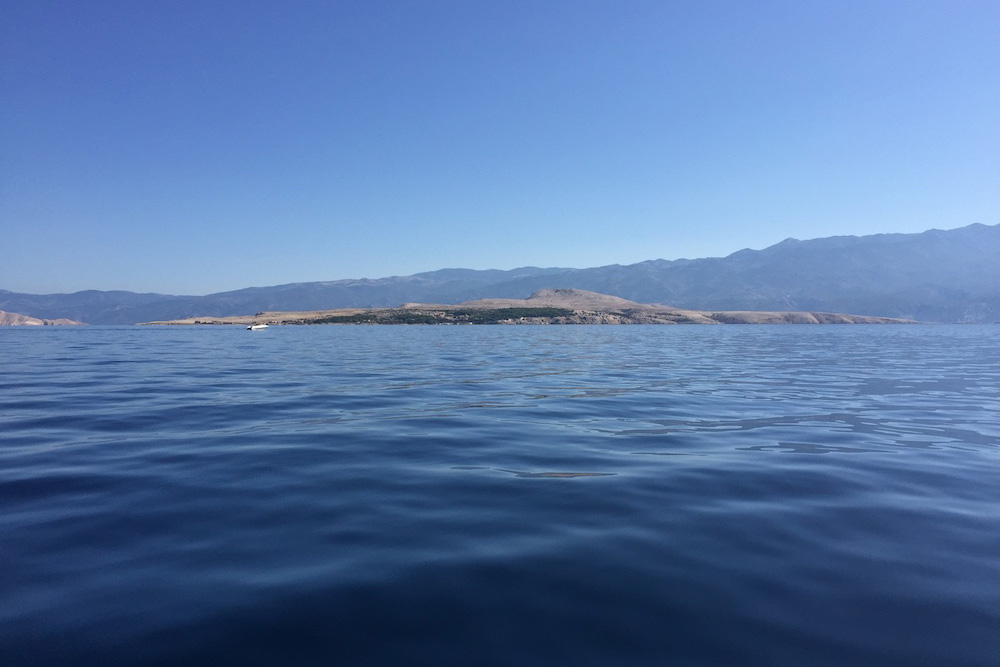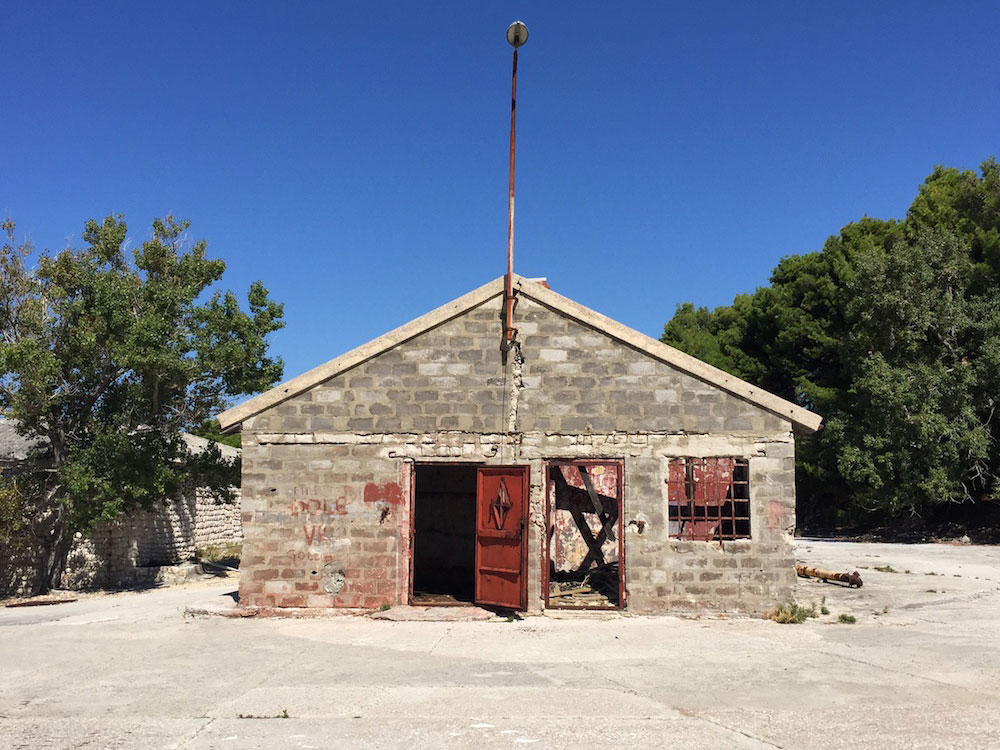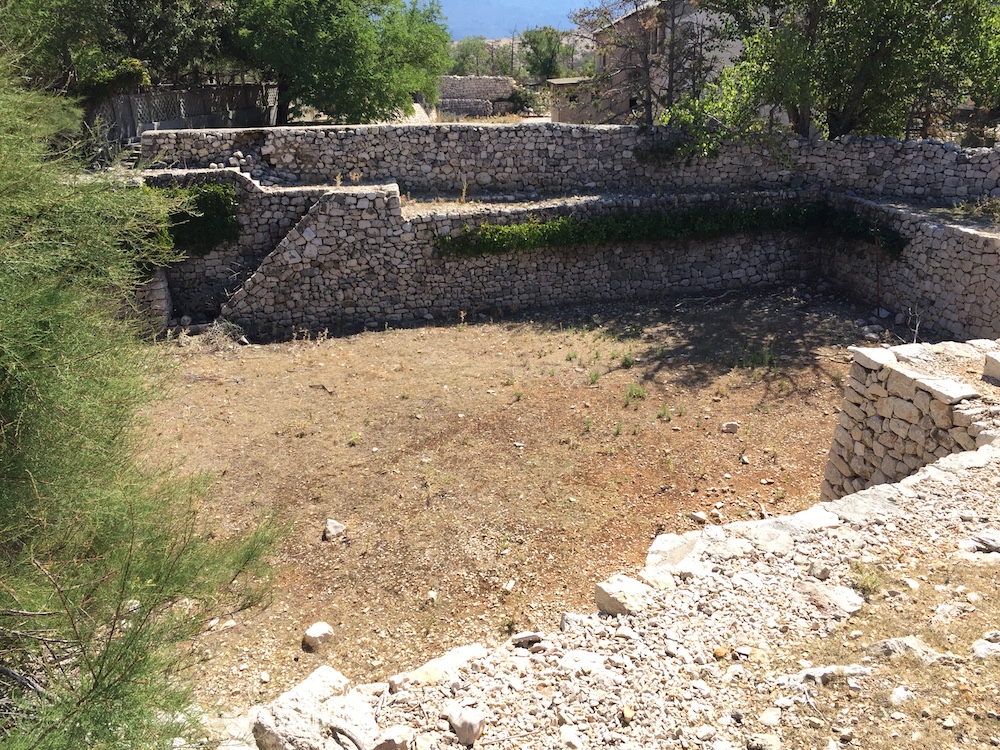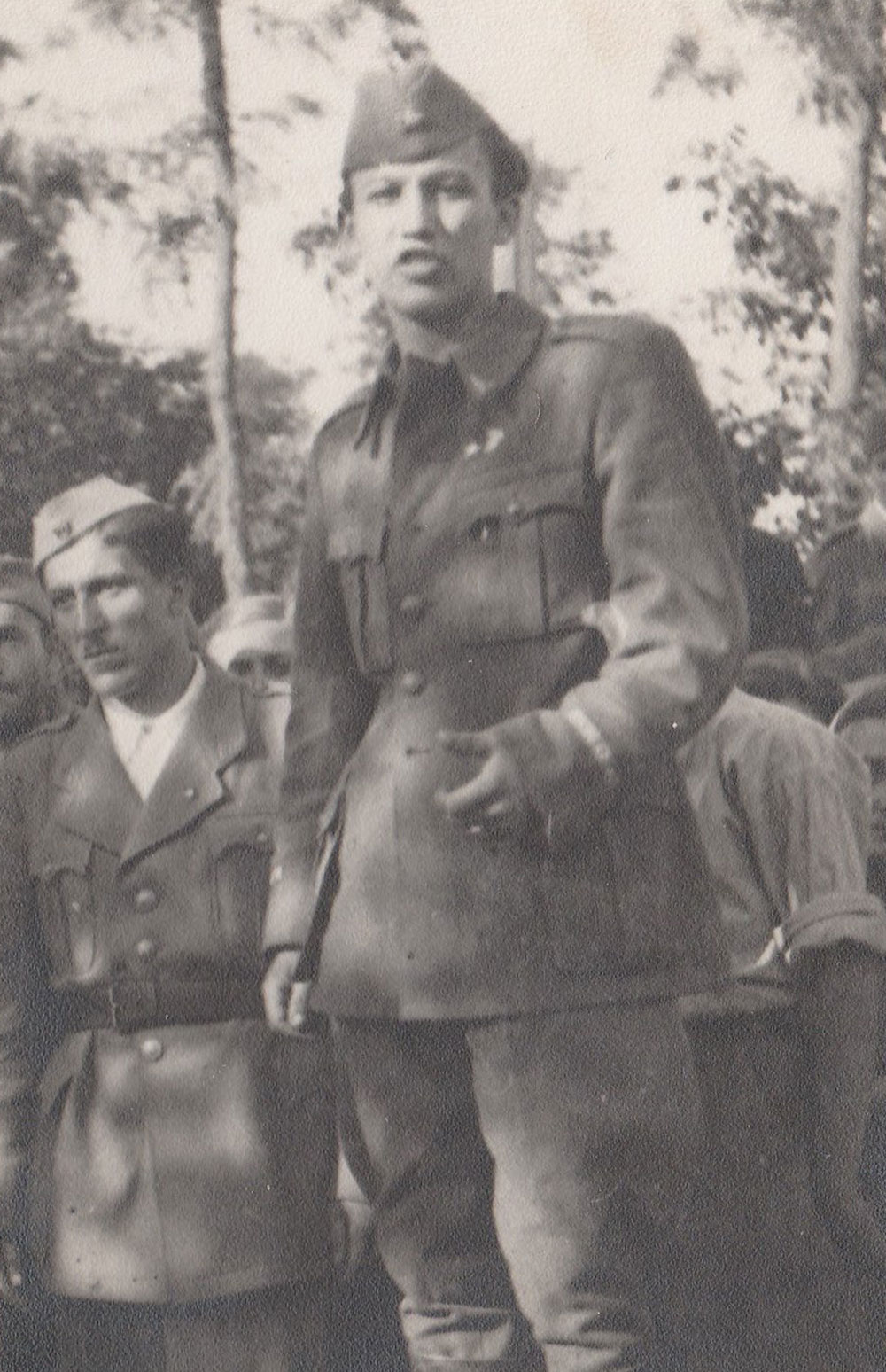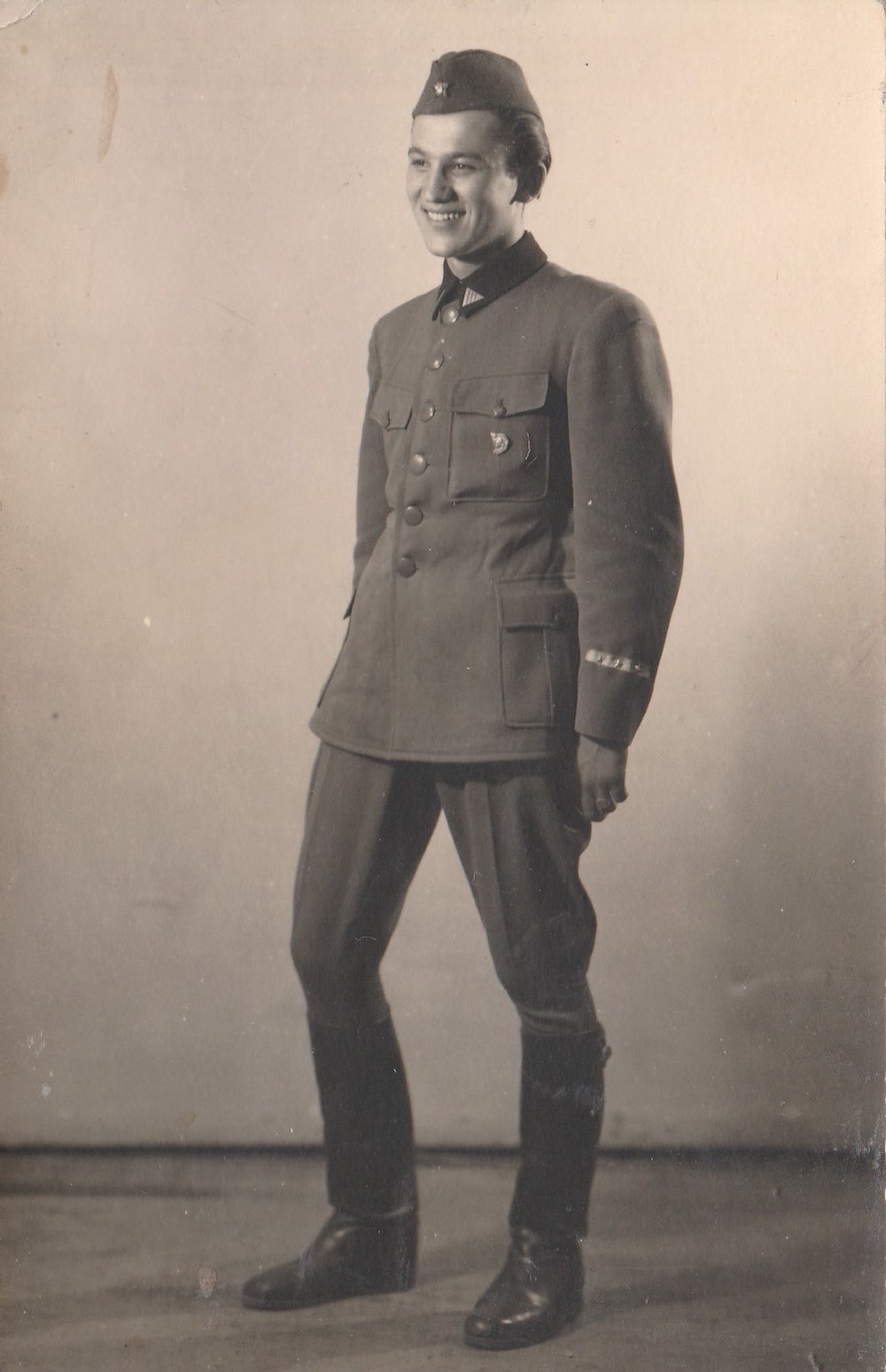Letter from Goli Otok: I visited the ‘Croatian Alcatraz’ where my grandfather was imprisoned
Closed in the late 1980s, Goli Otok was the site of a notorious prison and labour camp set up in 1949 to hold political dissidents. Now it is no more than a picturesque ruin, writes Nick Hermann, who set off to the Croatian Alcatraz to learn about his grandfather and former prisoner
The water taxi slaps through the waves, lifting and falling, sloshing the Adriatic on my sun-baked skin. We pass pleasure yachts and pedalos as we leave the island of Rab, sounds of summertime drowned by the drone of the motor. I shield my eyes in the midday heat, but I’m not sure what I’m looking for. When, eventually, we hone in on our destination, it’s unmistakable: the island lies low in the water, bald and gnarled, like a crocodile resting from a kill. We have arrived at Goli Otok: “the naked island”.
I am struck by the simple cruelty of this place, this open-air prison in sight of home
The smoke of grilled Ćevapi lingers by the harbour-side restaurant, where day-trippers eat beneath bright parasols emblazoned with brand names: Ožujsko and Karlovačko — popular Croatian lagers. On the other side is a small concrete building, the word “SUVENIRI” (souvenirs) hand painted above its door in wobbly, white letters. A woman in an orange bikini wanders past, on her way down to the rocks for a swim. I don’t know what I was expecting, but it wasn’t this.
Closed in the late 80s, Goli Otok was the site of a notorious prison and labour camp set up in 1949 to hold political dissidents, a purpose it served until 1956. Described as Tito’s “Devil’s Island” by a 1970 CIA intelligence report, its function was ideological “re-education” through hard labour and torture, where prisoners were pitted against each other in brutal psychological exercises designed to eliminate their personalities. Among the tens of thousands of people who were interned on Goli Otok (exact figures vary) was my grandfather, Nikola Novaković, who survived his time on the island, dying of cancer years later when I was eight. I have come to sift through his history, to see what I can unearth: a trace, a truth, a connection.
Nikola was a Yugoslav Partisan, a guerrilla fighter who resisted the German occupation during the Second World War. As a child, I was told stories about his life during this time: how he was forced to flee to the mountains at 16 because of his links with SKOJ, a clandestine Communist youth movement; how, to avoid blisters, he immediately traded away his expensive new boots, a gift from his father, for somebody’s worn-out pair; how he raided occupied towns, and liberated villages; how he learnt to march through the night while sleeping; how his girlfriend died in his arms. He came down from the mountains in 1945, a captain at the age of 19.
After the war, the leader of the Partisans, Marshal Josip Broz Tito, became Prime Minister of Yugoslavia (later President for Life) and broke off ties with the Soviet Union. A purge ensued to remove opponents of the new regime, and Nikola was asked to declare his loyalties. He chastised his questioners for denouncing Russia. He reminded them who had sent arms when the Partisans had nothing, and who had helped them liberate Belgrade. He informed them that without Russia’s support, he would be dead. The court heard what Nikola had to say, and when he was finished, sentenced him to 20 years on Goli Otok. He was to leave behind his wife and newly born son.
I follow a road that leads into a wooded area, where an old administration building bakes silently beneath the trees. The island was named for its desolation. When the first prisoners began to arrive, Goli Otok was a parched rock where nothing grew, scrubbed bare by the region’s punishing summers and harsh winter winds. Gradually, the place transformed as prisoners were forced to construct buildings and plant trees. Now, the island is still blinding white, but not entirely naked — a thin covering of vegetation clings to its lower regions: dry, thorny, sparse.
As I walk in the shade of pines planted by my grandfather, I struggle to reconcile my idea of the island with its reality. Here, people refer to Goli Otok as the “Croatian Alcatraz”, but once I’m clear of the harbour, the comparison is baffling. This place is worlds away from that other infamous island — a major museum filled with merchandise and audio guides. Apart from a single room displaying the odd artefact and a ten-minute film on loop, Goli Otok is a ruin. Earth and weeds fill the buildings, swallowing tools and machine parts. Paint peels from pockmarked walls. Light punches through collapsed ceilings. Girders, bent and brown, grope in the shadows like vines searching for the sky. And everywhere: rubble, on every rotten floorboard and piled in every corner.
I wander blindly across the island. Information is minimal — there exists no infrastructure of remembrance, no map to hold my hand. I move from ruin to ruin, forced to fill the cavities with my imagination. I find myself on a main road leading up a hill, factory buildings on either side. Prisoners were put to work in one of these three factories: metal, wood or rock. The metal factory manufactured parts for industry, the wood factory produced furniture for export around the world, and the rock factory turned the stone pulled from the island’s quarries into high-quality terrazzo tiles. I carefully navigate the large chunks of asbestos that are strewn around the island, and enter one of the buildings.
To me, he was “Dida”, a big man with a big smile, and big hands that he would use to pinch my cheeks. Even then, I could tell that those hands were rougher than most — that they had been used. My father likes to tell a story about how once, when visiting England, Nikola became frustrated with the speed at which my father was laying the patio and took over, finishing in minutes, using his bare hands to mix the cement.
I rest in the dappled shade of the crumbling roof and picture Nikola making things here. He was good at making things. I’ve seen the chess set he carved while he was on the island, and the animal-bone hairpins he sent back to my grandmother, Mirjana. This spot is where Nikola would have spent the majority of his time, building, breaking, blistering his hands. I crouch down and pocket a piece of rubble, speckled and dense: the corner of a terrazzo tile.
Hundreds — some say thousands — of people died on Goli Otok
At the top of the road, I’m passed by the “Goli Express” — a tourist-filled tractor train that steamrolls dust and debris, sheltering its cargo from experiencing the island too intimately. I continue to an exposed stretch of road that runs high to the north side. The outlines of Krk and Rab are visible in the distance, and just six kilometres away the mainland shimmers across the cyan sea. I am struck by the simple cruelty of this place, this open-air prison in sight of home.
I have read about something called “Peter’s Hole”, a pit where prisoners were tortured. After a wrong turn through a thatch of thorn bushes and corrugated iron, I find it in front of the admission and quarantine building. Once surrounded by guard towers, this is where the worst punishment took place. I don’t know if Nikola was ever thrown here, but he spoke of other tortures: how he was forced to carry boulders across the island in the heat, and when finished, told to take them back. He would also have experienced the “kroz stroj”, a human corridor of prisoners forced to beat each other mercilessly.
Hundreds — some say thousands — of people died on Goli Otok, but Nikola survived. In the end, he served a total of seven-and-a-half years, six on the island, released in 1956 on the eve of his 31st birthday when tensions between Belgrade and Moscow had softened following Stalin’s death. Over the next decade, he would rebuild his life, going from owning a small village shop, to working in a furniture factory, to finally becoming a successful company director in Novi Sad. My mother was born in 1957.
I am the same age now as Nikola was towards the end of his incarceration. As I stare down the boat’s wake at the shrinking island, I know I wouldn’t have made it. I know, despite the name we share, I’ll never be that strong. But I aspire to be.
My mother says Dida remained loyal to communist ideals but was indifferent to politics. He rarely talked about Tito, or what happened during the war, and continued to praise Russia until his death. The re-education had failed. Beyond the odd prison story, and a love of popara — a dish of bread and hot water that he was given on the island — Goli Otok’s shadow failed to reach them. My mother tells me he was difficult at times, stubborn, with a short fuse, but had a huge generosity of spirit and a fierce love for his family. She says he was a good father. After four years fighting and six resisting torture, Nikola returned home, with visible marks but remarkably whole, having earned an ordinary life.
Text and image: Nicholas Herrmann
